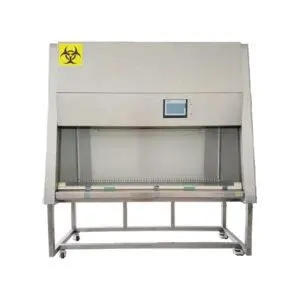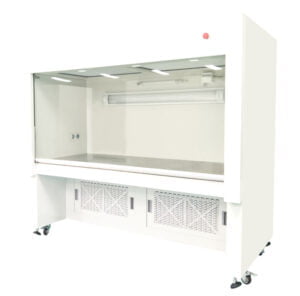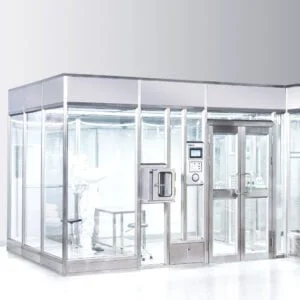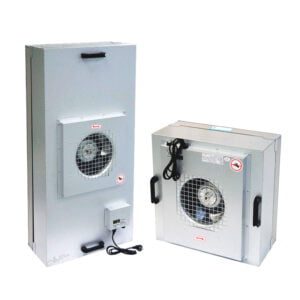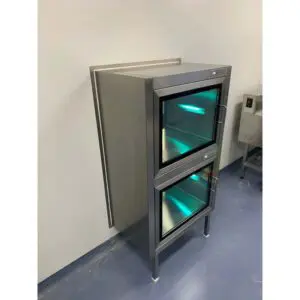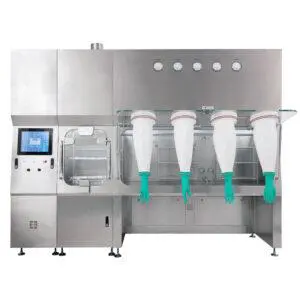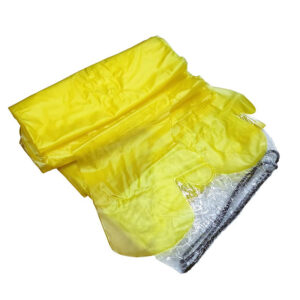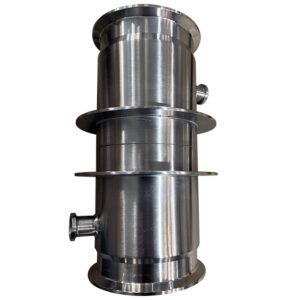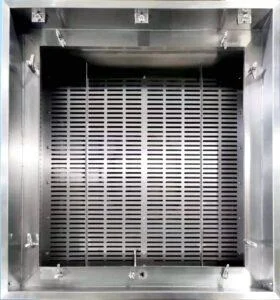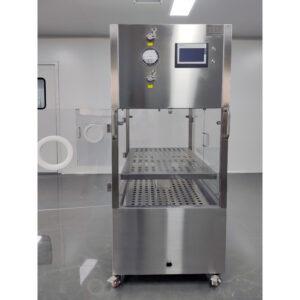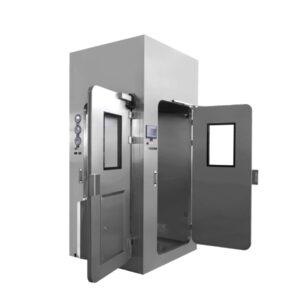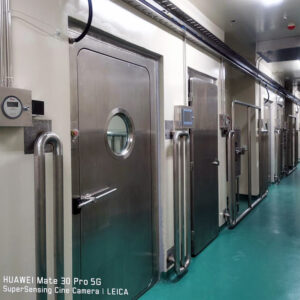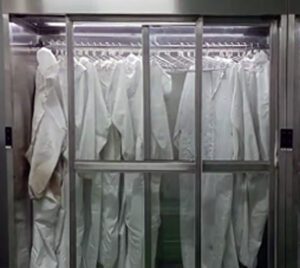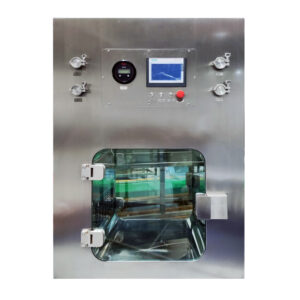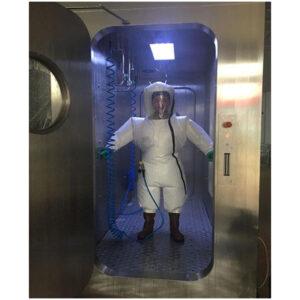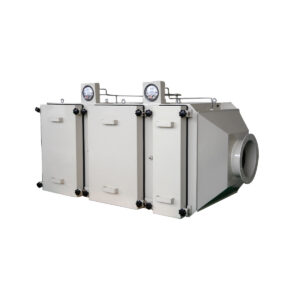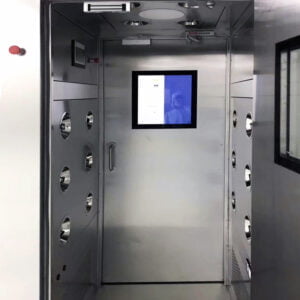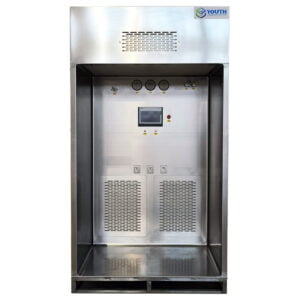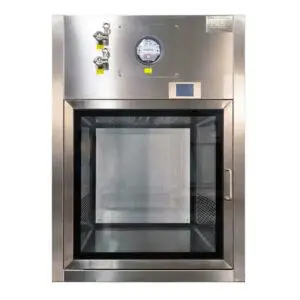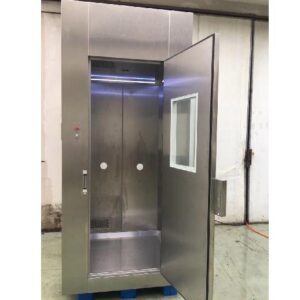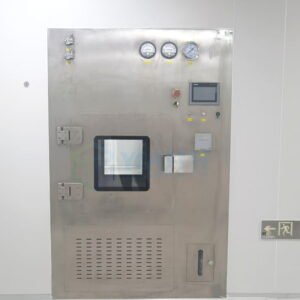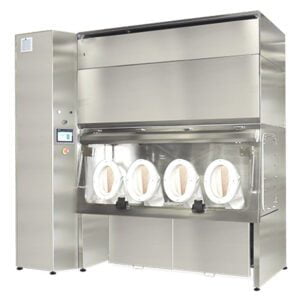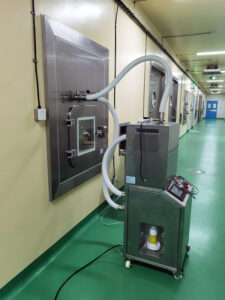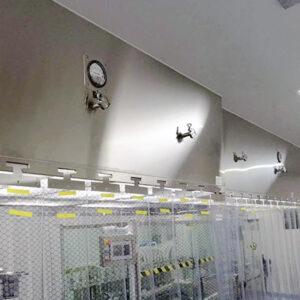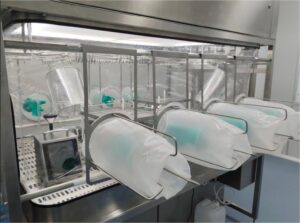Compact sterility test isolators have revolutionized the way small laboratories conduct sterility testing, offering a solution that combines efficiency, safety, and compliance in a space-saving design. These innovative systems provide a controlled, aseptic environment crucial for maintaining the integrity of sterile pharmaceutical products and medical devices. As the demand for sterile products continues to grow, the importance of reliable and accessible sterility testing methods has never been more critical.
In this comprehensive guide, we'll explore the world of compact sterility test isolators, their benefits, applications, and the key factors to consider when implementing them in small laboratory settings. From their role in ensuring product safety to their impact on operational efficiency, we'll delve into the various aspects that make these isolators an indispensable tool for quality control in the pharmaceutical and biotechnology industries.
As we venture into this topic, we'll examine the design features that set compact sterility test isolators apart, the regulatory standards they must meet, and the practical considerations for their installation and use. Whether you're a quality control manager, a laboratory technician, or a decision-maker in the pharmaceutical industry, this article will provide valuable insights into how compact sterility test isolators can enhance your testing capabilities and streamline your operations.
Compact sterility test isolators are essential for maintaining aseptic conditions in small laboratories, offering a controlled environment that minimizes contamination risks and ensures the reliability of sterility testing procedures.
What are Compact Sterility Test Isolators and How Do They Work?
Compact sterility test isolators are specialized containment systems designed to provide a sterile, controlled environment for conducting sterility tests on pharmaceutical products, medical devices, and other sterile items. These isolators are specifically engineered to fit into smaller laboratory spaces while maintaining the highest standards of sterility and contamination control.
At their core, compact sterility test isolators create a physical barrier between the product being tested and the external environment. This barrier is typically made of stainless steel and clear plastic or glass panels, allowing operators to view and manipulate items inside the isolator. The isolator maintains a positive pressure differential and uses HEPA filtration to ensure that only sterile air enters the workspace.
These systems work by combining several key components:
- An airtight chamber
- Glove ports for manipulation of materials
- Transfer ports for introducing and removing items
- A sophisticated air handling system with HEPA filtration
- Decontamination systems (often using vaporized hydrogen peroxide)
Compact sterility test isolators from YOUTH are designed to meet cGMP Class A/ISO 5 cleanliness standards, ensuring a sterile environment for critical testing procedures.
| Component | Function |
|---|---|
| Airtight Chamber | Maintains sterile environment |
| Glove Ports | Allows operator access without contamination |
| Transfer Ports | Facilitates sterile transfer of materials |
| HEPA Filtration | Ensures air purity |
| Decontamination System | Sterilizes the isolator between uses |
The combination of these elements creates a self-contained, aseptic workspace that significantly reduces the risk of contamination during sterility testing. This level of control is essential for ensuring the accuracy and reliability of test results, which are critical for product safety and regulatory compliance.
Why are Compact Sterility Test Isolators Essential for Small Labs?
In the realm of pharmaceutical and biotechnology research and production, maintaining sterility is paramount. For small laboratories, space constraints often present a significant challenge when it comes to implementing robust sterility testing protocols. This is where compact sterility test isolators become essential, offering a solution that doesn't compromise on quality or compliance despite size limitations.
Compact sterility test isolators are designed to fit into smaller spaces without sacrificing functionality. They provide all the benefits of larger isolator systems but in a more condensed format. This space-saving design is crucial for small labs that need to maximize their available area while still adhering to strict regulatory standards.
The compact sterility test isolators offered by YOUTH are specifically engineered to address the unique needs of small laboratories, providing a complete sterility testing solution in a compact footprint.
| Benefit | Impact on Small Labs |
|---|---|
| Space Efficiency | Maximizes use of limited laboratory space |
| Cost-Effectiveness | Reduces need for large cleanroom facilities |
| Flexibility | Allows for easier reconfiguration of lab space |
| Improved Safety | Minimizes operator exposure to hazardous materials |
| Consistent Results | Ensures reliable sterility testing outcomes |
These isolators are not just about saving space; they're about enhancing the overall capabilities of small laboratories. By providing a controlled, aseptic environment, they enable labs to conduct sterility tests with the same level of precision and reliability as larger facilities. This is particularly important for small biotech startups, research institutions, and quality control departments that need to maintain high standards without the luxury of expansive cleanroom facilities.
How Do Compact Sterility Test Isolators Improve Laboratory Efficiency?
Efficiency is a key concern for any laboratory, but it's particularly crucial for smaller operations where resources and space are at a premium. Compact sterility test isolators offer several features that significantly enhance laboratory efficiency, streamlining workflows and improving productivity.
One of the primary ways these isolators boost efficiency is by reducing the time and resources required for setup and sterilization. Traditional cleanroom environments require extensive preparation and cleaning protocols before and after use. In contrast, compact sterility test isolators can be quickly decontaminated using built-in systems, often employing vaporized hydrogen peroxide (VHP) cycles that can sterilize the workspace in a matter of hours.
Additionally, these isolators minimize the need for personnel to don full cleanroom garments, which can be time-consuming and costly. Operators can interact with samples through glove ports, maintaining sterility without the need for extensive gowning procedures.
Compact sterility test isolators can reduce setup times by up to 70% compared to traditional cleanroom environments, allowing for more tests to be conducted in a given time frame.
| Efficiency Factor | Traditional Cleanroom | Compact Sterility Test Isolator |
|---|---|---|
| Setup Time | 2-3 hours | 30-60 minutes |
| Decontamination | 24-48 hours | 4-6 hours |
| Personnel Gowning | Full cleanroom suit | Minimal PPE required |
| Sample Transfer | Multiple airlocks | Rapid transfer ports |
The integrated design of compact sterility test isolators also contributes to improved efficiency. Many models include features such as automated leak testing systems and integrated glove integrity testing, which can be performed quickly and easily. This reduces downtime and ensures that the isolator is always ready for use when needed.
By improving efficiency in these ways, compact sterility test isolators allow small laboratories to increase their testing capacity and throughput without expanding their physical footprint. This can lead to significant cost savings and faster turnaround times for critical sterility tests.
What are the Key Features to Look for in Compact Sterility Test Isolators?
When selecting a compact sterility test isolator for a small laboratory, it's essential to consider several key features that will ensure optimal performance, compliance, and user-friendliness. These features can make a significant difference in the isolator's effectiveness and its ability to meet the specific needs of your laboratory.
First and foremost, the isolator should meet or exceed industry standards for sterility and cleanliness. Look for systems that comply with cGMP Class A/ISO 5 standards, as these are typically required for sterility testing in pharmaceutical and medical device industries. The isolator should also be designed to maintain a consistent, positive pressure differential to prevent the ingress of contaminants.
Another critical feature is the filtration system. High-efficiency particulate air (HEPA) filters are standard, but some advanced models may offer ultra-low penetration air (ULPA) filters for even greater air purity. The air handling system should provide laminar airflow to maintain a uniform, particle-free environment within the workspace.
Advanced compact sterility test isolators should feature integrated monitoring systems that continuously track environmental parameters such as particle counts, pressure differentials, and air changes per hour.
| Feature | Importance | Impact on Testing |
|---|---|---|
| HEPA/ULPA Filtration | Essential | Ensures air purity |
| Positive Pressure | Critical | Prevents contamination |
| Integrated Monitoring | High | Provides real-time data |
| Automated Decontamination | Important | Reduces downtime |
| Ergonomic Design | Significant | Improves operator comfort |
Ergonomics is another crucial consideration, especially in compact systems where space is limited. Look for isolators with adjustable height, comfortable glove ports, and good visibility to reduce operator fatigue during extended testing sessions. Some models may offer features like adjustable lighting and even touchscreen interfaces for easier control and monitoring.
Decontamination capabilities are also vital. Many modern compact sterility test isolators come equipped with integrated VHP generators for rapid and effective sterilization. This feature can significantly reduce turnaround time between testing cycles and ensure consistent sterility of the workspace.
Lastly, consider the isolator's connectivity and data management features. Advanced systems may offer integration with laboratory information management systems (LIMS) or have the capability to generate electronic batch records, which can streamline documentation and improve traceability.
How Do Compact Sterility Test Isolators Ensure Regulatory Compliance?
In the highly regulated world of pharmaceutical and medical device manufacturing, ensuring compliance with regulatory standards is paramount. Compact sterility test isolators play a crucial role in meeting these stringent requirements, particularly when it comes to sterility assurance and quality control.
One of the primary ways compact sterility test isolators ensure compliance is by providing a controlled, aseptic environment that meets or exceeds the standards set by regulatory bodies such as the FDA, EMA, and WHO. These isolators are typically designed to achieve and maintain ISO 5 (Class 100) cleanliness levels, which is the minimum requirement for sterility testing areas according to most global regulatory standards.
Moreover, many compact sterility test isolators come equipped with features that facilitate compliance with Good Manufacturing Practices (GMP) and Good Laboratory Practices (GLP). These may include:
- Continuous environmental monitoring systems
- Automated documentation of critical parameters
- Audit trail capabilities for all user actions
- Integrated leak testing and integrity verification systems
Compact sterility test isolators with built-in compliance features can reduce the risk of regulatory non-conformities by up to 90% compared to traditional open cleanroom environments.
| Compliance Aspect | Traditional Method | Compact Sterility Test Isolator |
|---|---|---|
| Environmental Control | Manual monitoring | Automated, continuous monitoring |
| Documentation | Paper-based | Electronic, automated |
| Operator Training | Extensive | Simplified due to containment |
| Contamination Risk | Higher | Significantly reduced |
| Audit Readiness | Time-consuming prep | Always prepared |
Another significant aspect of regulatory compliance is validation. Compact sterility test isolators are typically easier to validate than large cleanroom environments due to their self-contained nature. Many manufacturers provide comprehensive validation packages, including Installation Qualification (IQ), Operational Qualification (OQ), and Performance Qualification (PQ) protocols, which streamline the validation process and ensure that the isolator meets all necessary regulatory requirements.
Furthermore, the use of compact sterility test isolators can simplify the process of demonstrating compliance during regulatory inspections. The contained environment and automated monitoring systems provide clear, easily accessible evidence of adherence to sterility standards. This can be particularly beneficial for small laboratories that may not have extensive resources dedicated to regulatory affairs.
What are the Maintenance Requirements for Compact Sterility Test Isolators?
Maintaining compact sterility test isolators is crucial for ensuring their continued performance, longevity, and compliance with regulatory standards. While these systems are designed to be robust and reliable, they do require regular care and attention to function optimally. Understanding the maintenance requirements is essential for laboratory managers and technicians to keep their isolators in top condition.
The maintenance regimen for compact sterility test isolators typically includes several key components:
- Regular cleaning and disinfection
- Filter replacement and integrity testing
- Glove and gasket inspection and replacement
- Calibration of monitoring instruments
- Verification of air handling systems
- Leak testing of the isolator chamber
Proper maintenance of compact sterility test isolators can extend their operational lifespan by up to 50% and reduce the risk of unexpected downtime by as much as 80%.
| Maintenance Task | Frequency | Impact on Performance |
|---|---|---|
| Cleaning | Daily/Weekly | Prevents contamination buildup |
| Filter Replacement | Bi-annually/Annually | Ensures air quality |
| Glove Inspection | Monthly | Maintains barrier integrity |
| Instrument Calibration | Annually | Ensures accurate monitoring |
| Leak Testing | Quarterly | Verifies containment |
| VHP System Check | Bi-annually | Ensures effective decontamination |
One of the advantages of compact sterility test isolators is that many maintenance tasks can be performed more easily and quickly compared to larger systems or traditional cleanrooms. For instance, the smaller size means less surface area to clean and disinfect, and the integrated design often allows for easier access to components that require regular inspection or replacement.
However, it's important to note that while some routine maintenance can be performed by trained laboratory personnel, certain tasks may require specialized expertise. Many manufacturers offer service contracts that include regular maintenance visits, which can be particularly beneficial for small laboratories that may not have dedicated engineering support on-site.
Preventive maintenance is key to avoiding unexpected issues and ensuring the continuous availability of the isolator for critical testing procedures. Implementing a comprehensive maintenance schedule and keeping detailed records of all maintenance activities is not only good practice but also often a regulatory requirement.
How Do Compact Sterility Test Isolators Compare to Traditional Cleanrooms?
When it comes to conducting sterility tests, laboratories have traditionally relied on cleanroom environments. However, compact sterility test isolators have emerged as a compelling alternative, particularly for smaller operations. Understanding how these two options compare is crucial for laboratories considering their sterility testing setup.
Cleanrooms provide a controlled environment for sterility testing but require a significant amount of space and resources to maintain. They involve complex air handling systems, strict personnel gowning procedures, and extensive cleaning protocols. In contrast, compact sterility test isolators offer a more contained and manageable solution, providing a sterile workspace within a much smaller footprint.
One of the primary advantages of compact sterility test isolators over traditional cleanrooms is the level of control they offer. Isolators can maintain a more consistent sterile environment with less risk of contamination from personnel or external sources. They also require less energy to operate and maintain the desired cleanliness levels.
Studies have shown that compact sterility test isolators can reduce operational costs by up to 65% compared to equivalent cleanroom spaces while providing superior contamination control.
| Factor | Traditional Cleanroom | Compact Sterility Test Isolator |
|---|---|---|
| Initial Cost | High | Moderate |
| Operating Cost | High | Low |
| Space Required | Large | Minimal |
| Personnel Requirements | Multiple trained staff | 1-2 operators |
| Contamination Risk | Moderate | Very Low |
| Flexibility | Limited | High |
Flexibility is another area where compact sterility test isolators shine. They can be more easily relocated or reconfigured as laboratory needs change, whereas cleanrooms are typically fixed installations. This adaptability can be particularly valuable for small labs or startups that may need to adjust their layout or scale their operations over time.
However, it's important to note that cleanrooms still have their place, particularly in large-scale manufacturing environments or situations where multiple concurrent processes need to be performed in a controlled environment. Compact sterility test isolators are ideal for focused applications like quality control testing in smaller facilities.
In terms of regulatory compliance, both cleanrooms and isolators can meet necessary standards, but isolators often provide more consistent and easily demonstrable compliance due to their contained nature and integrated monitoring systems.
What Future Developments Can We Expect in Compact Sterility Test Isolator Technology?
As technology continues to advance, the field of compact sterility test isolators is poised for exciting developments that promise to further enhance their capabilities and efficiency. These future innovations are likely to address current challenges and open up new possibilities for sterility testing in small laboratory environments.
One of the most anticipated developments is the integration of advanced artificial intelligence (AI) and machine learning algorithms into isolator systems. These technologies could potentially automate many aspects of the testing process, from sample handling to result interpretation. AI-driven systems could also predict maintenance needs, optimize decontamination cycles, and provide real-time adjustments to maintain optimal testing conditions.
Another area of focus is the development of more sustainable and eco-friendly isolator technologies. This could include the use of energy-efficient components, recyclable materials, and alternative decontamination methods that reduce reliance on harsh chemicals.
Industry experts predict that by 2030, over 80% of compact sterility test isolators will incorporate some form of AI-assisted automation, potentially reducing human error in testing procedures by up to 95%.
| Future Technology | Potential Impact | Estimated Timeline |
|---|---|---|
| AI Integration | Enhanced automation and predictive maintenance | 3-5 years |
| Sustainable Materials | Reduced environmental impact | 2-4 years |
| Advanced Sensors | Improved contamination detection | 1-3 years |
| VR/AR Interfaces | Enhanced operator training and guidance | 3-6 years |
| Modular Designs | Increased customization options | 2-4 years |
Advancements in material science may lead to the development of new barrier technologies that offer improved durability, flexibility, and contamination resistance. These could potentially extend the lifespan of isolators and reduce the frequency of glove and gasket replacements.
The integration of virtual reality (VR) and augmented reality (AR) technologies is another exciting prospect. These could be used to provide immersive training experiences for operators or to offer real-time guidance during complex procedures, potentially reducing errors and improving efficiency.
Lastly, we can expect to see more modular and customizable isolator designs that allow laboratories to easily adapt their systems to changing needs. This could include interchangeable components, scalable configurations, and even the ability to connect multiple isolators to create larger, integrated testing environments.
As these technologies evolve, compact sterility test isolators will likely become even more integral to small laboratory operations, offering unprecedented levels of control, efficiency, and adaptability in sterility testing procedures.
In conclusion, compact sterility test isolators have revolutionized the way small laboratories approach sterility testing, offering a powerful solution that combines efficiency, safety, and regulatory compliance in a space-saving design. These innovative systems provide a controlled, aseptic environment crucial for maintaining the integrity of sterile pharmaceutical products and medical devices, all while addressing the unique challenges faced by smaller laboratory spaces.
Throughout this article, we've explored the various aspects of compact sterility test isolators, from their fundamental workings to their impact on laboratory efficiency and regulatory compliance. We've seen how these systems compare favorably to traditional cleanrooms in terms of cost-effectiveness, contamination control, and flexibility. The key features we've discussed, such as advanced filtration systems, integrated monitoring, and automated decontamination, highlight the sophisticated engineering behind these compact yet powerful tools.
The maintenance requirements and future developments in isolator technology underscore the ongoing evolution of these systems. As we look to the future, the integration of AI, sustainable materials, and advanced interfaces promises to further enhance the capabilities of compact sterility test isolators, making them even more indispensable for small laboratories.
For quality control managers, laboratory technicians, and decision-makers in the pharmaceutical and biotechnology industries, the adoption of compact sterility test isolators represents a strategic investment in precision, efficiency, and compliance. As the demand for sterile products continues to grow, these isolators will play an increasingly critical role in ensuring product safety and quality across a wide range of applications.
In embracing this technology, small laboratories can level the playing field, achieving levels of sterility assurance and testing capabilities that were once the domain of much larger facilities. The compact sterility test isolator is not just a piece of equipment; it's a gateway to enhanced capabilities, improved workflows, and the confidence that comes with knowing your sterility testing is meeting the highest standards of quality and reliability.
External Resources
Compact Sterility Testing Isolator System (CST-IS) – Tema Sinergie – This page describes the Compact Sterility Testing Isolator System (CST-IS), a modular cGMP Class A/ISO 5 isolator system designed for QC laboratories. It highlights features such as automatic leak testing, integrated Automatic Glove Leak Testing System (AGLTS 2), and compliance with GMP and FDA standards.
Sterility Test Isolator – Envair Technology – This resource details the Envair sterility test isolator, which is designed for sterile processing and sterility testing routines. It emphasizes the need for an internal sterile environment and the isolator's role in maintaining this environment.
Sterility Test Isolators – YOUTH Clean Tech – This article explains the role of Sterility Testing Isolators in ensuring aseptic conditions, minimizing contamination risks, and protecting operators and samples. It also covers applications in the pharmaceutical, biotechnology, and medical device industries.
Sterility Control and Test Isolator – Jacomex – This page discusses the importance of using a sterility control and test isolator in pharmacology, particularly for sterile pharmaceutical products. It highlights the benefits of a controlled aseptic environment and the isolator's compact and safe design.
Sterile Testing Isolators – Pharmaceutical Technology – This resource covers the technical and regulatory aspects of sterile testing isolators, including their design, operation, and compliance with industry standards.
Isolators for Sterility Testing – LabX – This link provides information on various isolators available for sterility testing, including their features, specifications, and applications in different laboratory settings.
Sterility Testing Isolators: Ensuring Product Safety – BioPharm International – This article focuses on how sterility testing isolators ensure the safety and sterility of pharmaceutical products and medical devices, including regulatory compliance and best practices.
Sterile Isolators for Pharmaceutical Applications – Cleanroom Technology – This resource discusses the use of sterile isolators in pharmaceutical applications, including their role in maintaining cleanroom environments, preventing contamination, and adhering to GMP standards.
Related Contents:
- Custom Sterility Test Isolators: Top 5 Designs 2025
- Flexible Wall Isolators: Cost-Effective Sterility Testing
- Glove Sterility Test Isolators: Essential Guide 2025
- Half-Suit Sterility Test Isolators: Ergonomic Design
- Modular Sterility Testing Isolators: Flexible Solutions
- Multi-Chamber Sterility Test Isolators: Versatile Testing
- Rapid Bio-Decontamination Isolators: Fast & Efficient
- VHP Isolators: Advanced Containment for Sterile Environments
- LAF Garment Cabinets in Pharmaceutical Manufacturing


